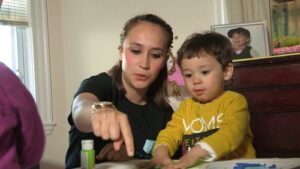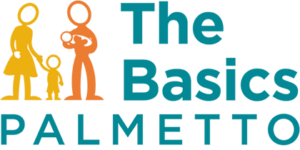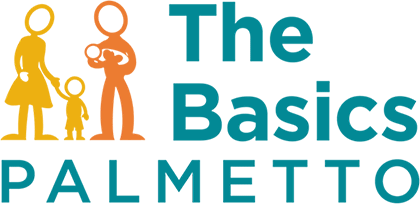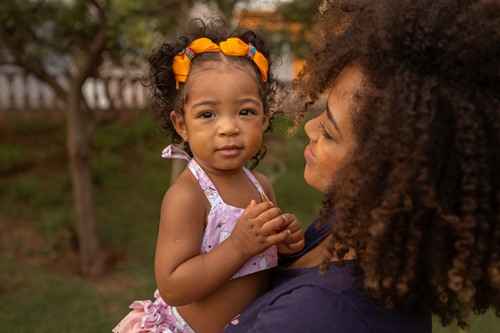If you’re a parent or caregiver, you already have the superpowers you need to help your child learn to communicate! You don’t need a degree in speech or child development. You don’t need books written by experts or expensive educational toys. Babies learn to talk from being talked to.
Talking, singing, and pointing with your baby from the very beginning are some of the most important things you can do to build a strong and healthy brain!
Children learn language from the moment they are born. Day by day, babies learn that sounds have meaning. Every time you talk, sing, or point to what you are talking about, you provide clues to the meaning of what you are saying. Talking is teaching.
This is why “Talking, Singing and Pointing” is one of The Basics, 5 fun, simple, powerful ways every child can get a great start in life!
Here are six simple ways you can talk, sing and point with your baby or toddler. Chances are, you’re already doing these things throughout the day. But being mindful of just how important it is to talk, sing, and point, can help you be even more intentional with your child.
1. Talk throughout the day.
Talk to your child during activities like changing, feeding, bathing, going for walks, and running errands.
Describe what you are doing. Name and point to the objects around you. If you have a baby, know that the sound of your voice is your baby’s favorite sound! So when you fix lunch, buckle carseats, or walk to the mailbox, describe what you’re doing.
2. Add ideas.
Help grow your child’s use of words by expanding on what he says. For example, if he says “eat,” you can respond with, “Yes, let’s eat a snack. I’m going to fix some apple slices and cheese.”
3. Point.

When you talk about something, point to it. This helps your child understand what you mean. Encourage your child to point, too. “Can you point to your shoes?” This will help them connect words to objects.
4. Sing.
Sing songs and recite nursery rhymes. Choose ones you remember from your own childhood or make up new ones. Children love music, and there is a great deal of research that supports the power of music and rhyming for healthy brain development!
5. Go back and forth.
When your baby makes a sound, show excitement in your face and voice! Respond to their sound with words and see how long you can keep the “conversation” going. You may have seen this video that went viral of a dad having an animated conversation with his toddler. This is a perfect example of going back and forth, even though your little one may not be using real words yet.
6. Listen and respond

Listen to your toddler’s questions and answer them. Have a conversation. This is when the most powerful learning takes place.

Here are some resources that can help you on your journey:
- Watch this short video for encouraging ways that real parents are Talking, Singing and Pointing with their little ones.
- Visit the “Talk, Sing, and Point” page and click on the tips at the bottom of the page for Infants 0-12 months and Toddlers 12-24 months.
- Receive regular, FREE resources from The Basics Palmetto.
- Follow The Basics Palmetto on Facebook / Twitter / Instagram. We provide encouraging, real-life, shareable content to help parents and caregivers!
If you, your faith community, your organization, or your place of business would like to join us as a Champion for Children, contact us! palmettobasics@gmail.com.
Thanks for sharing this post and spreading the word about The Basics Palmetto to those within your circle of influence!

